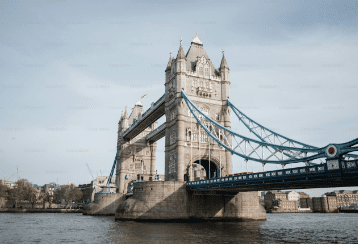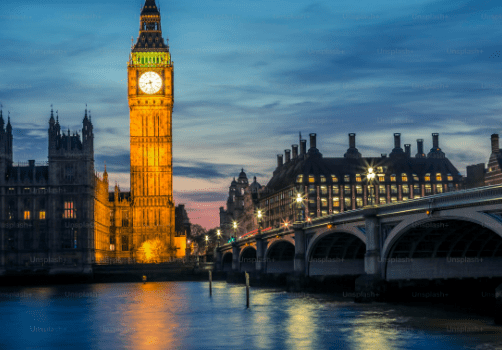When British clocks change each autumn, the London Eye, one of the UK’s most iconic landmarks, is about to do something incredibly special: spin backwards. Yes, you read that right! This giant Ferris wheel, which usually moves forward or clockwise, will turn in the opposite direction for a short time on Sunday morning to mark the end of British Summer Time (BST) and the return to Greenwich Mean Time (GMT).
Why Does British Summer Time End?
Every year, at 2:00 a.m. on the last Sunday in October, British clocks go back an hour. This ritual officially ends British Summer Time, a seasonal adjustment intended to give everyone more daylight during spring and summer evenings. When the clocks fall back, the UK returns to its standard time, known as Greenwich Mean Time, meaning it gets lighter earlier in the morning but also darker sooner in the evening.

But this change is more than just an hour shift. It’s also a reminder that winter is coming, and soon, days will be shorter, and nights much longer. This time adjustment has become a fascinating tradition that people look forward to, even though it can be a bit confusing.
The London Eye’s Special Tribute to Time Change
The London Eye has been a part of London’s skyline since 2000, standing tall at 135 meters with its 32 pods representing the boroughs of London. This giant observation wheel usually spins forward, taking visitors on a breathtaking journey with panoramic views of the city. But this Sunday, at 8:15 a.m., the wheel will do something it has done only once before in its history: it will go backwards!
This backward spin is the London Eye’s special way of marking the switch from British Summer Time to Greenwich Mean Time. This rare event is meant to be a fun, symbolic gesture to capture the essence of “falling back.”
Why This is Such a Rare Event
The London Eye almost always spins in a forward direction, and only twice in its entire history has it gone backward. The first time was in 2019, when it also spun backward to celebrate the end of British Summer Time. This quirky little tradition, while not widely known, has been a huge hit with locals and tourists alike. It’s a rare, fun moment for those lucky enough to witness it in person.
A Treat for Early Risers
For those up early enough, watching the London Eye move backwards is something worth waking up for. The backward spin will last only around 30 minutes before the wheel resumes its usual clockwise rotation. The London Eye won’t be open to the public during this reverse spin, so it’s really a moment just to observe from the ground and appreciate.
Robin Goodchild, the senior general manager of the lastminute.com London Eye, shared his excitement: “We are thrilled to share a unique moment with everyone as the London Eye goes backwards to mark the end of British Summer Time.” For him and the London Eye team, this backward spin is a great way to bring attention to this time transition and also showcase the city’s magical transformation from autumn to winter.
London’s Night Skyline: A Spectacular View for Visitors
One beautiful thing about this time of year, especially for those who love cityscapes, is the way London lights up in the early evening. With days growing shorter and nights coming earlier, the London Eye offers visitors an even more stunning experience in the evening hours. Imagine getting on the wheel as the sun sets and watching the city slowly transform into a glowing sea of lights. This seasonal view allows visitors to see London in a new light—literally—as autumn sunsets melt into the twinkling cityscape.
The London Eye’s general manager, Robin Goodchild, adds: “As the nights draw in, early evening rides offer guests breathtaking panoramic views of London’s skyline, showcasing the transition from autumnal sunsets to thousands of twinkling lights.”
The History and Significance of the London Eye
Opened to celebrate the new millennium, the London Eye was built as a tribute to London’s rich history and culture. Standing at 135 meters, it was once the world’s tallest Ferris wheel and remains the most popular paid tourist attraction in the United Kingdom. Each of its 32 pods symbolizes one of the 32 boroughs of London, making the Eye a literal symbol of unity for the city. Since it opened, it has become an essential stop for millions of tourists who want to see London from above.
For many Londoners and visitors alike, the London Eye is more than just an attraction. It’s a way to experience the city from a unique perspective. The panoramic view from the top offers a 360-degree look at iconic landmarks like the River Thames, Big Ben, Buckingham Palace, and beyond. And now, this rare backward rotation adds yet another layer to its charm.

The Charm of Clock Changes
The end of British Summer Time and the return to GMT may not sound exciting to everyone, but it’s a part of life in the UK that brings a fun mix of reactions. For some, it’s an excuse to enjoy a cozy extra hour of sleep, while others may have to adjust their routines. But whether it’s loved or disliked, the clock change is something people love to talk about.
This year, with the London Eye’s rare backward spin, the clock change has gained even more attention. For many, this fun gesture brings a sense of novelty and excitement to what could otherwise be a regular Sunday morning. It’s a moment that reminds people that even something as routine as time can be celebrated in new and creative ways.


